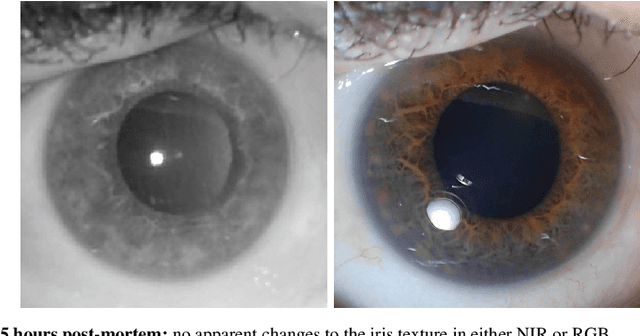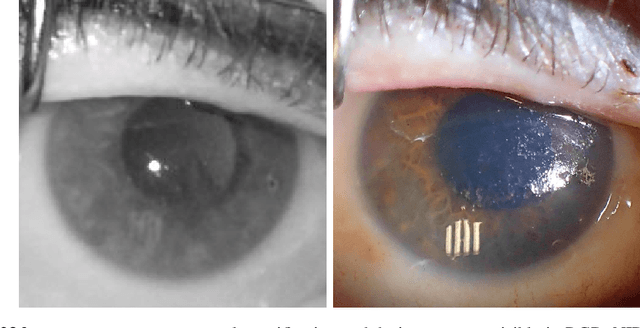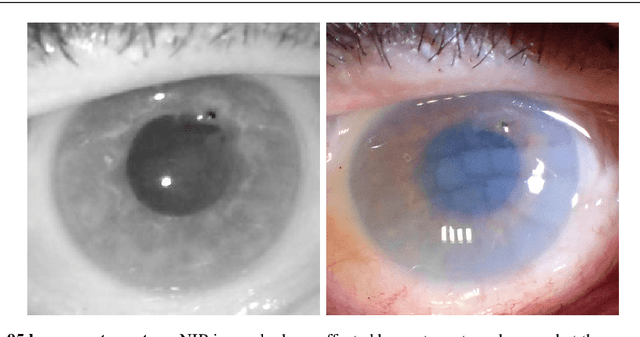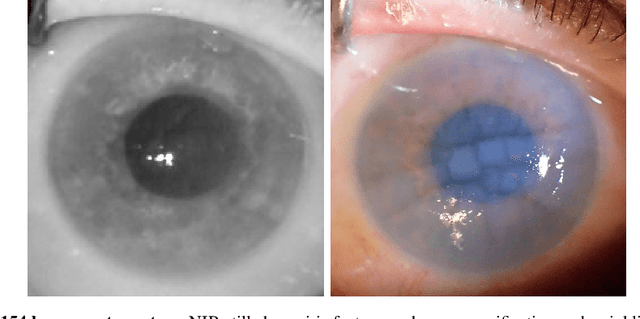Post-mortem Iris Decomposition and its Dynamics in Morgue Conditions
Paper and Code
Nov 07, 2019



With increasing interest in employing iris biometrics as a forensic tool for identification by investigation authorities, there is a need for a thorough examination and understanding of post-mortem decomposition processes that take place within the human eyeball, especially the iris. This can prove useful for fast and accurate matching of ante-mortem with post-mortem data acquired at crime scenes or mass casualties, as well as for ensuring correct dispatching of bodies from the incident scene to a mortuary or funeral homes. Following these needs of forensic community, this paper offers an analysis of the coarse effects of eyeball decay done from a perspective of automatic iris recognition point of view. Therefore, we analyze post-mortem iris images acquired in both visible light as well as in near-infrared light (860 nm), as the latter wavelength is used in commercial iris recognition systems. Conclusions and suggestions are provided that may aid forensic examiners in successfully utilizing iris patterns in post-mortem identification of deceased subjects. Initial guidelines regarding the imaging process, types of illumination, resolution are also given, together with expectations with respect to the iris features decomposition rates.
 Add to Chrome
Add to Chrome Add to Firefox
Add to Firefox Add to Edge
Add to Edge